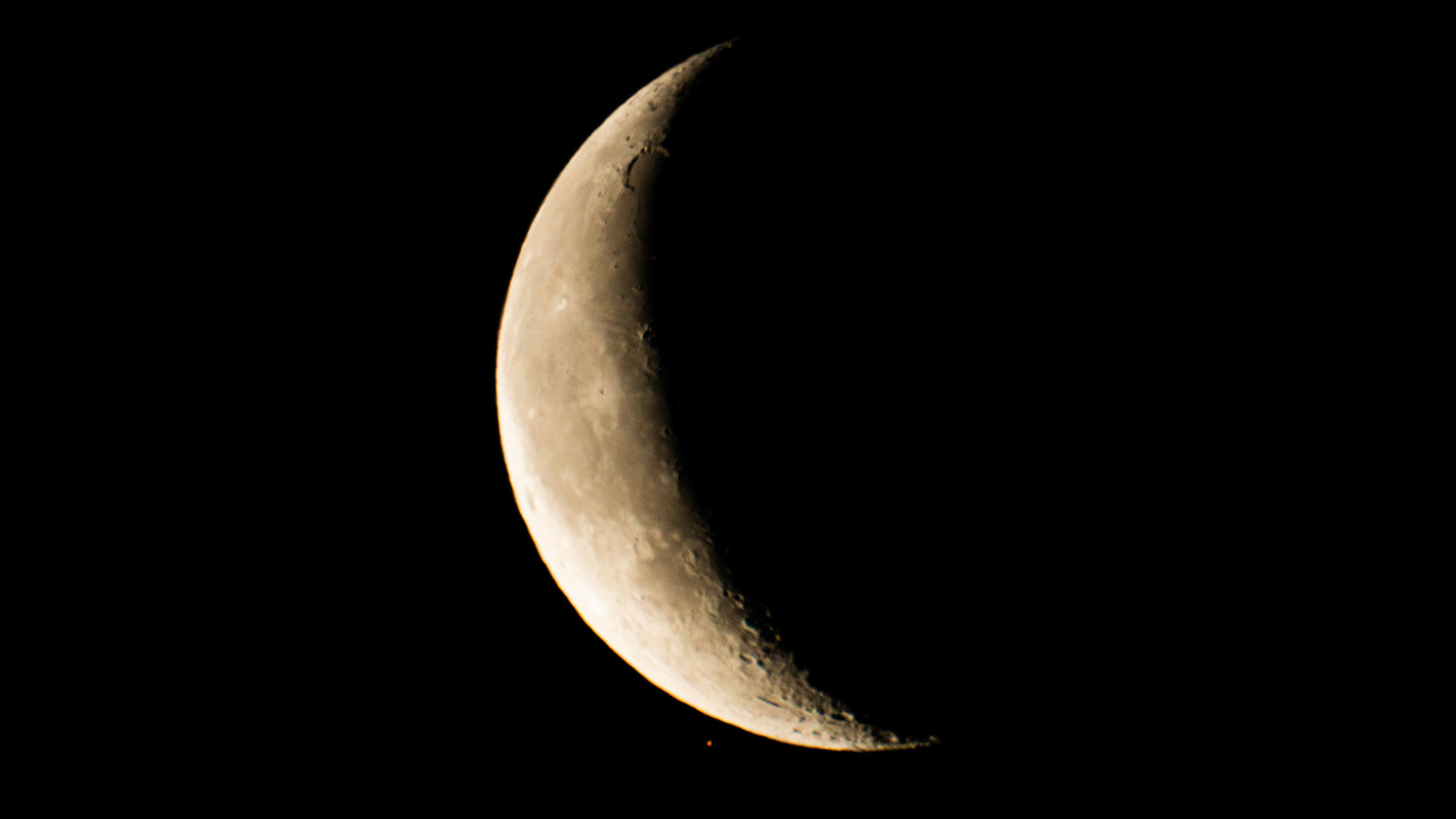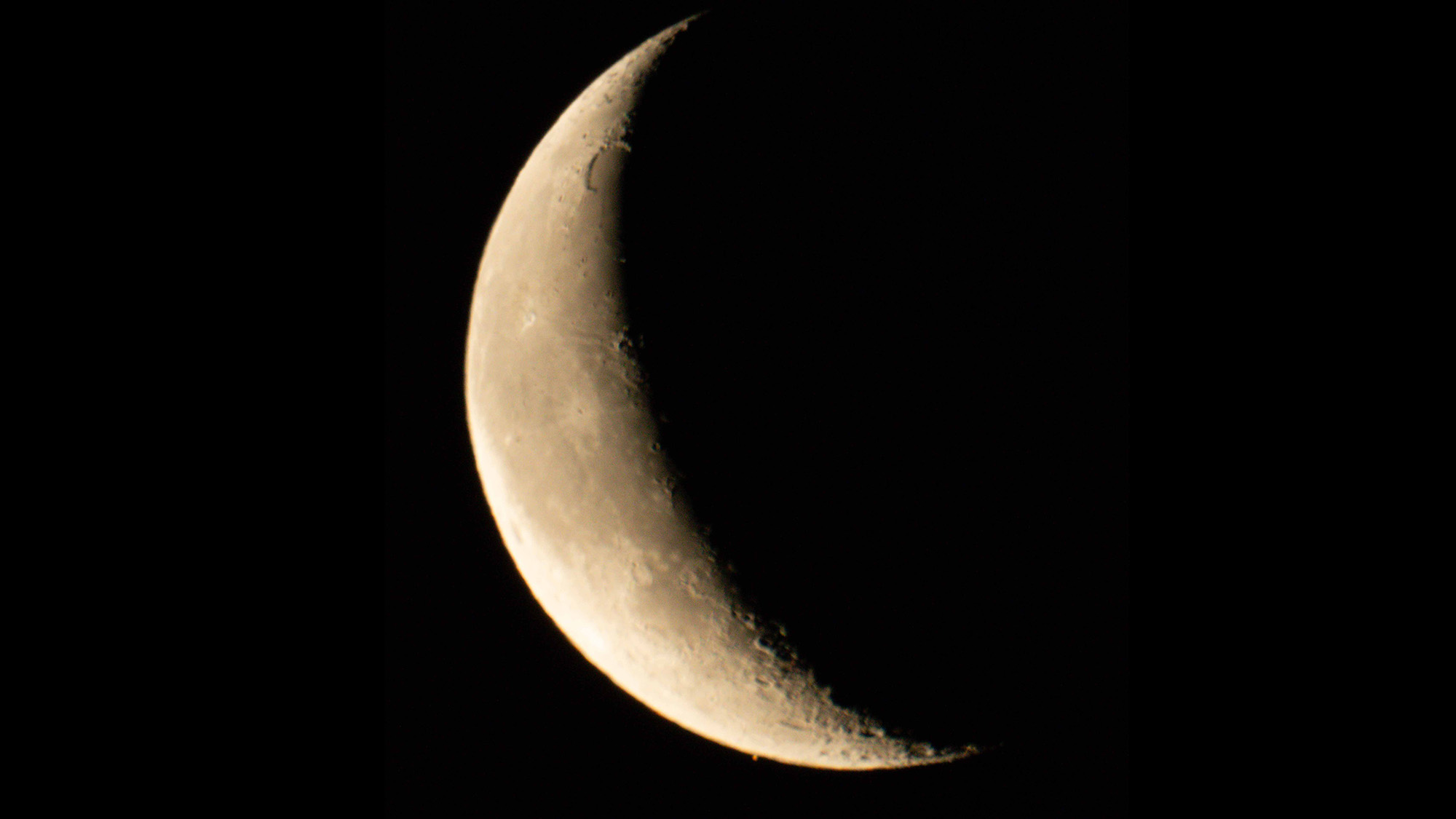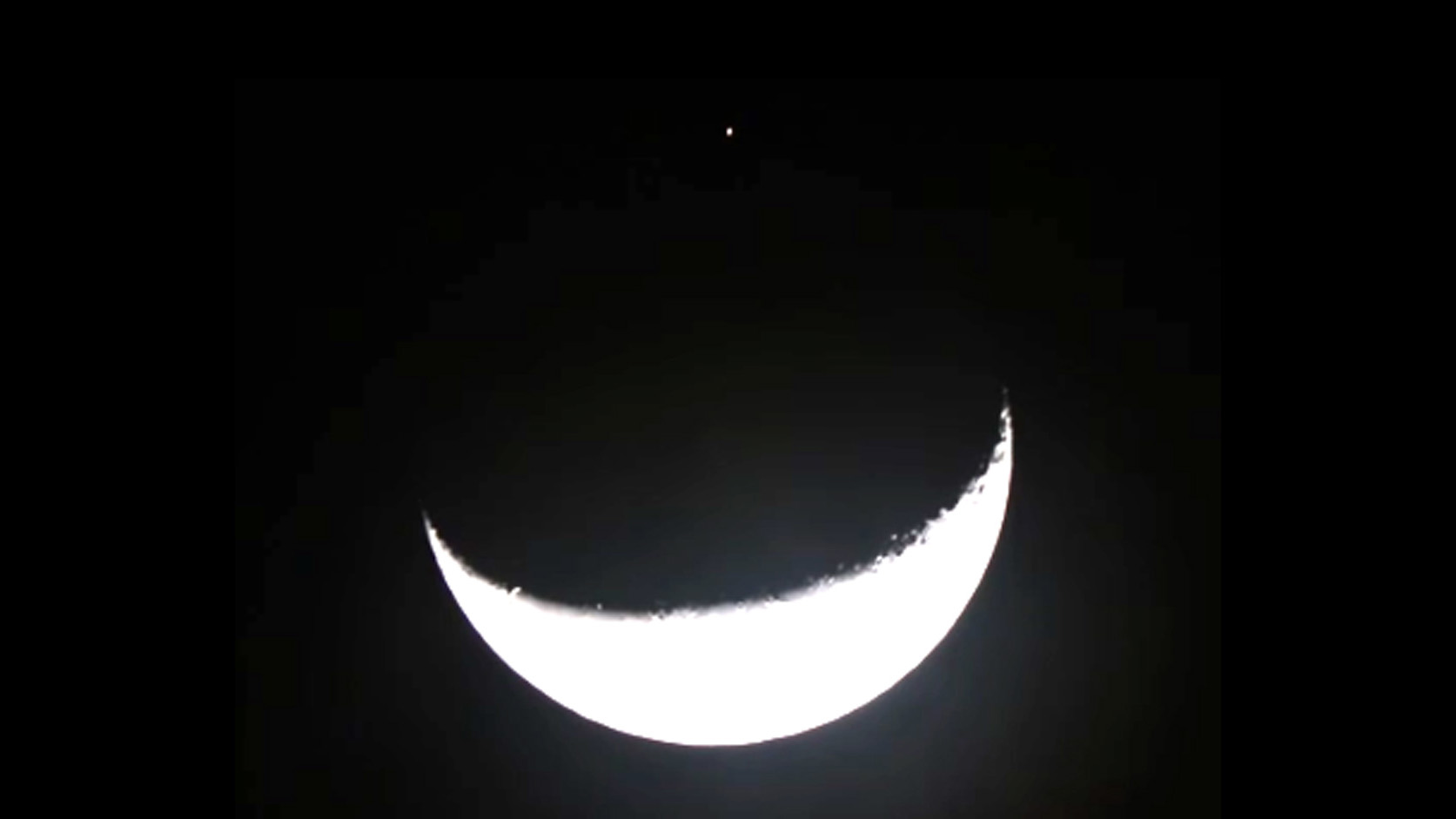Watch Mars 'sneak' behind the crescent moon in these amazing views (video)
The Red Planet briefly disappeared behind the moon for skywatchers in North America on Tuesday (Feb. 18), providing a rare celestial treat for early risers and astrophotographers.
This game of cosmic "peekaboo" began early Tuesday morning, when the sun had already begun to rise above the U.S. East Coast and Mars had mostly faded into the daylight. However, skywatchers out west had a much better view of the planet as it was "eclipsed" by the moon — but those observers had to wake up well before the crack of dawn to witness the event, which is known as an occultation.
In Sedona, Arizona, astrophotographer Victor Rogus captured a video of Mars peeping out from behind the moon at the end of the occultation. "Early this morning, we saw the planet Mars as it rose over the dark limb of our moon," Rogus told Space.com. "The occultation started, for us in Sedona, while the moon and planet were low on the horizon and in the trees. However, the pair were placed high in the sky for the end of the event," about an hour later.
Video: Moon 'eclipses' Mars in Arizona's early morning sky
Related: When, where and how to see the planets in the 2020 night sky
About 200 miles (370 kilometers) down the road in Tucson, Arizona, astrophotographer B.G. Boyd caught an unobstructed view of the beginning of the occultation, which started there at 4:38 a.m. local time.
Boyd's photos show the Red Planet inching toward the lower limb of the waning, crescent moon. At the time, the moon's face was about 24% illuminated by sunlight.


For skywatchers in the rest of the world, where the moon did not pass directly in front of Mars, the celestial pair made a close approach in the night sky. Mars was in conjunction with the moon, meaning the two objects shared the same celestial longitude, at 8:17 a.m. EST (1317 GMT).
Breaking space news, the latest updates on rocket launches, skywatching events and more!
The moon will once again be in conjunction with Mars on March 18, on the same day that our natural satellite will be in conjunction with Jupiter and Saturn. The three planets will huddle around the waning crescent in the predawn sky.
Mars is currently shining at a relatively faint magnitude of +1.2, or about as bright as the star Deneb, which marks the tail of the constellation Cygnus, the swan. To observe Mars in daylight, skywatchers need a telescope or binoculars. The Red Planet will be at its brightest in October, when it reaches opposition, or the point in its orbit where the planet is directly opposite the sun in Earth's sky.
- Earth plays 'peekaboo' with the moon in this awesome time-lapse video
- The brightest planets in February's night sky: How to see them (and when)
- Amazing photos: The 'blood moon' eclipse and Mars opposition of 2018
Email Hanneke Weitering at hweitering@space.com or follow her @hannekescience. Follow us on Twitter @Spacedotcom and on Facebook.
OFFER: Save at least 56% with our latest magazine deal!
All About Space magazine takes you on an awe-inspiring journey through our solar system and beyond, from the amazing technology and spacecraft that enables humanity to venture into orbit, to the complexities of space science.

Hanneke Weitering is a multimedia journalist in the Pacific Northwest reporting on the future of aviation at FutureFlight.aero and Aviation International News and was previously the Editor for Spaceflight and Astronomy news here at Space.com. As an editor with over 10 years of experience in science journalism she has previously written for Scholastic Classroom Magazines, MedPage Today and The Joint Institute for Computational Sciences at Oak Ridge National Laboratory. After studying physics at the University of Tennessee in her hometown of Knoxville, she earned her graduate degree in Science, Health and Environmental Reporting (SHERP) from New York University. Hanneke joined the Space.com team in 2016 as a staff writer and producer, covering topics including spaceflight and astronomy. She currently lives in Seattle, home of the Space Needle, with her cat and two snakes. In her spare time, Hanneke enjoys exploring the Rocky Mountains, basking in nature and looking for dark skies to gaze at the cosmos.


